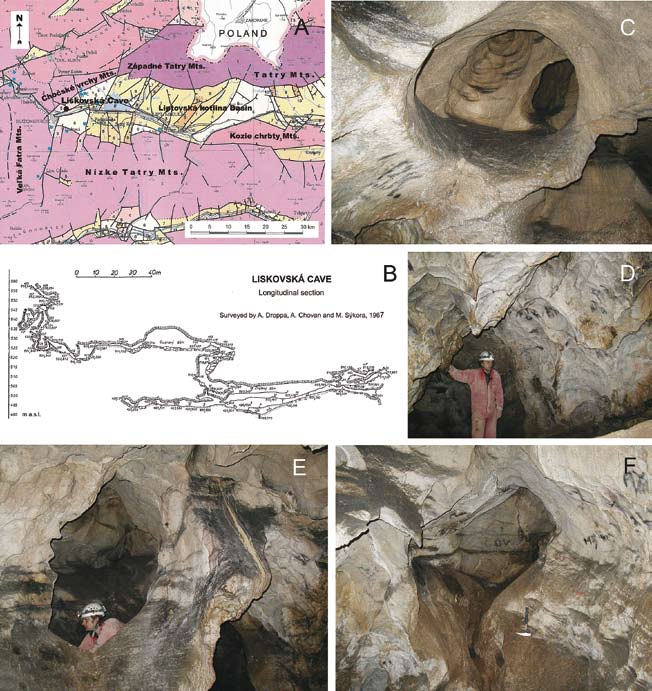Speleogenesis along deep regional faults by ascending waters: case studies from Slovakia and Czech Republic
DOI:
https://doi.org/10.3986/ac.v41i2-3.556Povzetek
The most conspicuous six examples illustrating ascending (perascensum) speleogenesis linked with deep faults/fault systemswere selected from Slovakia and Czech Republic. In the past,the caves have been described as product of phreatic, epiphreaticand vadose speleogenesis related to the evolution of localwater courses and valley incision, and linked mostly with Pleistocenegeomorphic evolution. Our analysis illustrates severalcommon characteristics of caves: (1) they developed along or inclose vicinity of deep faults/fault zones, commonly of regionalimportance; (2) the groundwater ascended due to deep faults/fault systems mostly as results of deep regional circulation ofmeteoric waters from adjacent karst or nonkarst areas; (3) the3D mazes and labyrinths dominate in cave morphology; (4)speleogens (e.g., cupolas, slots, ceiling channels, spongework,rugged phreatic morphology especially along slots) indicateascending speleogenesis in deep phreatic to phreatic environments;(5) they exhibit poor relation to the present landscape;in some of them fluvial sediments are completely missing inspite of surface rivers/streams in the direct vicinity; (6) strongepiphreatic re-modelling is common in general (e.g., subhorizontalpassages arranged in cave levels, water-table flat ceilingsand notches) and related to the evolution of the recent landscape;(7) recharge structures and correlate surface precipitatesare poorly preserved or completely missing (denuded) on thepresent surface in spite of fact that recent recharges broadlyprecipitate travertines; (8) caves can be, and some of them are,substantially older than the recent landscape (Pliocene, Miocene),and (9) caves were formed in conditions of slow water ascent, which differentiate the process from faster vauclusianascending speleogenetical models. Any of described caves containsclear diagnostic features of real hypogene caves. There aremissing evidences that at least heated groundwaters took partduring speleogenesis of studied caves, nevertheless, somewhatincreased water temperature can be expected during speleogenesisat least in some of caves. Any of described caves cannotbe directly characterized as product of thermal waters or hydrothermalprocess (i.e. as real hyperkarst sensu Cigna 1978),therefore they do not represent hypogenic caves.Prenosi
Podatki o prenosih še niso na voljo.

Prenosi
Objavljeno
2012-12-15
Kako citirati
Bella, P., & Bosak, P. (2012). Speleogenesis along deep regional faults by ascending waters: case studies from Slovakia and Czech Republic. Acta Carsologica, 41(2-3). https://doi.org/10.3986/ac.v41i2-3.556
Številka
Rubrike
Original papers
Licenca
Avtorji jamčijo, da je delo njihova avtorska stvaritev, da v njem niso kršene avtorske pravice tretjih oseb ali kake druge pravice. V primeru zahtevkov tretjih oseb se avtorji zavezujejo, da bodo varovali interese založnika ter da bodo povrnili morebitno škodo.
Podrobneje v rubriki: Prispevki




